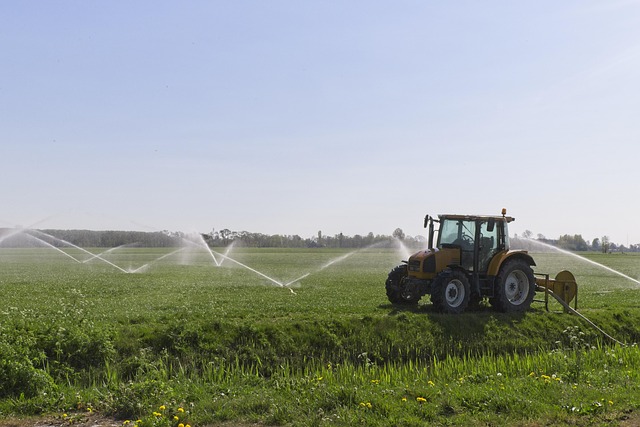Unlocking Affordable Vehicle Coverage: A Comprehensive Guide

Understanding vehicle coverage pricing factors like driving history, vehicle type, location, and cre…….
In an era defined by rapid technological advancement and growing environmental concerns, vehicle coverage has emerged as a critical component of modern transportation systems. This comprehensive article aims to delve into the multifaceted world of vehicle coverage, exploring its various dimensions, global impact, economic implications, and future potential. By examining historical contexts, analyzing trends, and presenting case studies, we will uncover the significance of this dynamic field and its role in shaping sustainable and efficient mobility solutions.
Definition: Vehicle coverage refers to the collective measures and systems designed to ensure the safe and efficient operation of vehicles, encompassing both physical infrastructure and technological solutions. It includes a range of services, from traditional insurance and maintenance to advanced driver-assistance systems (ADAS) and autonomous driving capabilities.
Core Components:
Insurance and Risk Management: A cornerstone of vehicle coverage, insurance protects owners and drivers against financial loss due to accidents, theft, or damage. Various types of insurance policies cater to different needs, such as liability, collision, comprehensive, and personal injury protection.
Vehicle Maintenance and Repair: Regular servicing and repair are vital for maintaining vehicle safety and performance. Coverage in this area can include scheduled maintenance packages, roadside assistance, and warranty services.
Telematics and Data Analytics: The integration of telematics technology enables real-time tracking, monitoring, and data collection from vehicles. This data is invaluable for insurance companies and fleet managers, allowing them to assess risk, optimize routes, and improve overall efficiency.
Advanced Driver Assistance Systems (ADAS): ADAS employs sensors, cameras, and software to enhance driver awareness and support safe driving practices. Examples include adaptive cruise control, lane-keeping assist, automatic emergency braking, and blind-spot monitoring.
Autonomous Driving Technologies: As the automotive industry shifts towards automation, vehicle coverage is evolving to accommodate autonomous vehicles (AVs). This includes liability insurance for AVs, remote diagnostics, over-the-air updates, and cyber security measures.
Historical Context:
The concept of vehicle coverage has its roots in the early 20th century when automobiles became more widespread. Initial forms of coverage focused primarily on physical protection against accidents and theft. Over time, as vehicles became complex machines with intricate mechanical systems, coverage evolved to include electronic components and software. The advent of telematics in the late 1990s revolutionized vehicle coverage by enabling two-way communication between vehicles and service providers, paving the way for more sophisticated solutions.
Vehicle coverage has a profound global impact, influencing not only individual mobility but also the overall efficiency and sustainability of transportation systems. Key trends shaping this landscape include:
| Region | Trends | Impact |
|---|---|---|
| North America | Increasing adoption of ADAS and AV technologies | Enhanced road safety and reduced congestion |
| Europe | Stricter emission standards and focus on electric vehicles (EVs) | Transition to cleaner and more efficient mobility |
| Asia-Pacific | Rapid urbanization leading to higher vehicle ownership | Growing demand for comprehensive coverage options |
| Emerging Markets | Mobile insurance solutions gaining popularity | Improved access to coverage in underserved areas |
Regional Variations:
North America: Known for its advanced automotive industry, North America leads in the implementation of cutting-edge technologies like ADAS and autonomous driving. Vehicle coverage here is highly specialized, catering to a wide range of vehicle types and use cases.
Europe: With stringent environmental regulations, Europe is experiencing a shift towards electric vehicles and sustainable transportation. This trend influences vehicle coverage by focusing on eco-friendly practices, such as offering incentives for EV ownership and developing specific insurance products for low-emission vehicles.
Asia-Pacific: Rapid economic growth and urbanization drive high vehicle ownership rates in this region. As a result, there is a growing demand for affordable and comprehensive coverage options to cater to diverse customer segments.
Emerging Markets: In regions with limited access to traditional financial services, mobile insurance solutions are revolutionizing vehicle coverage. These digital platforms enable real-time policy purchases, claims, and updates, making insurance more accessible and convenient.
The economic aspects of vehicle coverage are multifaceted, impacting both the insurance industry and the broader economy.
Market Dynamics:
Growth in Electric Vehicle (EV) Ownership: The increasing popularity of EVs presents new challenges and opportunities for coverage providers. Insurers need to adapt their policies to account for unique EV-related risks, such as battery failure and cyber threats, while also capitalizing on the potential for reduced insurance claims due to lower fuel consumption and fewer moving parts.
Telematics and Data-Driven Pricing: The use of telematics data allows insurers to offer more personalized coverage plans based on individual driving behavior. This trend results in more accurate risk assessment and pricing, benefiting both customers and insurers.
Digitalization and Mobile Insurance: The rise of mobile apps and digital platforms has transformed how consumers interact with insurance providers. Real-time policy management, instant claims processing, and location-based services are reshaping the market dynamics, increasing competition and customer satisfaction.
Investment Opportunities:
Autonomous Vehicle (AV) Ecosystem: As AV technology matures, a new ecosystem of coverage products will emerge. This includes liability insurance for AV operators, cyber security coverage for self-driving vehicles, and remote diagnostics services to support fleet managers in maintaining autonomous fleets.
Data Analytics and Risk Management: Advanced analytics and machine learning algorithms enable insurers to predict and manage risks more effectively. By leveraging vast amounts of data, they can identify patterns, assess new risks, and develop innovative coverage solutions.
Technological breakthroughs are at the heart of modern vehicle coverage, shaping its future in remarkable ways.
Advanced Driver Assistance Systems (ADAS):
Adaptive Cruise Control (ACC): ACC uses sensors to maintain a safe following distance from the vehicle ahead, automatically adjusting speed as needed. This system reduces tailgating and crash risks.
Lane-Keeping Assist (LKA): LKA alerts drivers when their vehicles drift out of their lanes and can gently steer or apply brakes to keep them in their lane.
Automatic Emergency Braking (AEB): AEB uses sensors to detect potential collisions and applies the brakes automatically to avoid or mitigate the impact. This technology significantly reduces the severity of accidents.
Autonomous Driving:
Level 1: Driver Assistance: Basic driver assistance features like cruise control and lane keeping represent the first level of automation, enhancing driver comfort but requiring continuous human monitoring.
Level 2: Partial Automation: Systems at this level, such as adaptive cruise control and automated steering, can handle specific tasks but require drivers to remain engaged.
Level 3: Conditional Automation: AVs at this level can operate without driver intervention under certain conditions, like highway driving. However, they must be prepared to take over if needed.
Level 4: High Automation: Fully autonomous vehicles capable of handling all driving tasks in specific environments are the ultimate goal. These vehicles do not require any driver input or monitoring.
Cybersecurity:
As connected and automated vehicles become more prevalent, cybersecurity is a growing concern. Coverage providers are developing policies to protect against cyber threats, data breaches, and hacking attempts that could compromise vehicle systems. This includes insurance for AVs and coverage for the repair or replacement of compromised automotive electronics.
A European insurance company implemented a telematics program offering discounted rates to drivers with good safety records and responsible driving behavior. The program used GPS tracking to monitor driving habits, including speed, acceleration, and abrupt braking. Drivers could earn discounts by maintaining safe driving patterns, encouraging responsible behavior and reducing claims. This initiative resulted in lower insurance costs for eligible customers while improving overall road safety.
In a developing country with limited access to traditional banking services, a startup launched a mobile insurance platform that allowed users to purchase coverage on their smartphones. The app offered instant policy generation, real-time claims processing, and location-based services for road assistance. This digital solution made insurance more accessible, convenient, and affordable for previously uninsured drivers, contributing to increased vehicle ownership and improved road safety in the region.
While vehicle coverage has come a long way, several challenges and opportunities lie ahead:
Data Privacy and Security: As coverage providers collect vast amounts of data from vehicles and drivers, ensuring data privacy and security becomes critical. Striking a balance between data utilization for personalized services and protecting sensitive information is essential to maintaining customer trust.
Regulation and Standardization: The rapid pace of technological change requires flexible regulatory frameworks that can adapt to new vehicle types and coverage models. Standardization of data formats and communication protocols will be crucial for seamless integration of various systems and providers.
Sustainability and Green Insurance: With increasing pressure to reduce environmental impact, there is a growing demand for sustainable insurance products. This includes coverage incentives for fuel-efficient vehicles, electric vehicles, and eco-friendly driving practices.
Autonomous Vehicle Liability: As AVs become more prevalent, determining liability in the event of accidents or malfunctions will be complex. Insurance providers need to develop specialized policies addressing these new challenges while ensuring consumer protection.
Looking ahead, vehicle coverage is poised for continued growth and innovation as it plays a pivotal role in shaping the future of mobility. By embracing technological advancements, addressing regulatory hurdles, and prioritizing sustainability, this dynamic field will contribute to safer, more efficient, and environmentally conscious transportation systems globally.

Understanding vehicle coverage pricing factors like driving history, vehicle type, location, and cre…….

Comprehensive Vehicle Coverage protects against diverse risks, from natural disasters to mechanical…….

Full Vehicle Coverage offers comprehensive protection for car owners against multiple risks, includi…….

Vehicle coverage varies by vehicle type and usage, with compact cars, trucks, off-road vehicles, and…….

Vehicle insurance classifications vary by vehicle type, with cars, commercial vehicles, and recreati…….

Understanding vehicle coverage factors like driving history, vehicle details, and deductibles is key…….

Vehicle insurance is a mandatory safety net that protects individuals from financial loss in vehicle…….

Vehicle liability and coverage are essential for protecting individuals and assets from financial lo…….

Low-cost vehicle insurance is essential for responsible car ownership, providing vital protection at…….

Vehicle coverage is essential for financial protection and peace of mind while driving. It includes…….